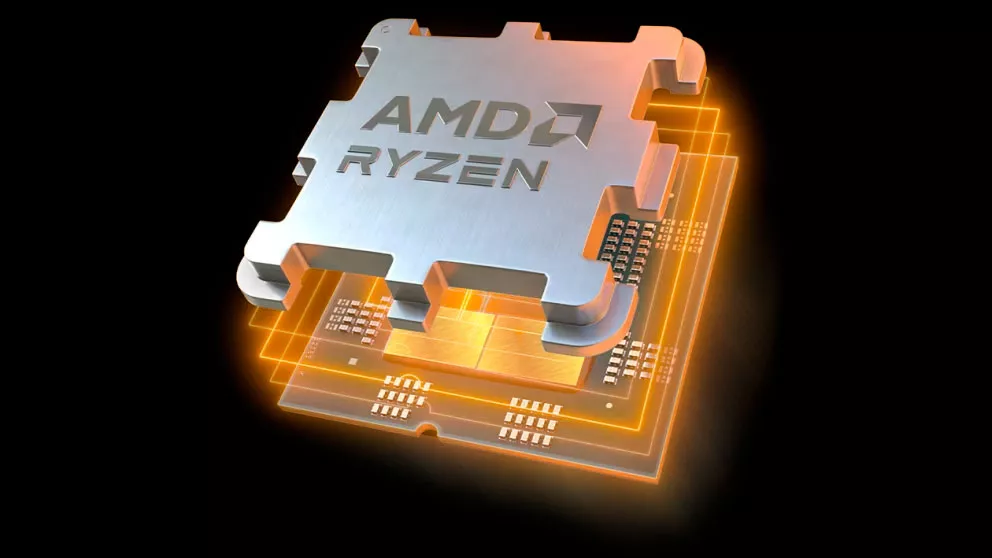It didn’t take long for AMD’s Ryzen 7 7800X3D to claim a spot on the list of best CPUs. According to new user benchmarks(opens in new tab), the octa-core chip performs similarly on X670 and A620 motherboards for gaming. However, multi-threaded applications such as Cinebench 23 seem to have a slight performance difference.
AMD recently launched the A620 chipset to provide consumers with an entry-level option to upgrade to Zen 4 and the corresponding AM5 platform. However, A620 motherboards, which start at $85, are ideal for Ryzen 7000 non-X processors with a 65W TDP and an 88W PPT. In addition, higher-end SKUs may boot on A620 motherboards if the firmware allows it. Still, the onboard power delivery subsystem will limit the processor’s multi-threaded performance since it won’t have the power headroom.
One crucial aspect to take into account is that, while the 88W PPT is the base specification for the A620 chipset, motherboard manufacturers can equip their A620 boards with higher power delivery subsystems. This will make things interesting since not all A620 motherboards on the market are built the same. However, a more robust power delivery subsystem conveys a higher cost, so the more premium A620 motherboards may sell very close to the price of B650 motherboards.
The Korean YouTuber compared the Ryzen 7 7800X3D’s performance on MSI’s Pro X670-P WiFi motherboard and Gigabyte’s A620M Gaming X. The former’s power delivery system flaunts a 14+2+1 design and retails for $259(opens in new tab). At the same time, the Gigabyte motherboard has an 8+2+1 layout; however, the pricing remains a mystery since it isn’t available at any U.S. retailers yet.
The X670 test system used the Arctic Liquid Freezer II 420, whereas the A620 test system was chilled by a DeepCool AG400. It’s unknown why the reviewer didn’t use the same cooling for both systems. The systems also had a GeForce RTX 4080 for the gaming workload at 1080p (1920×1080) resolution and 32GB (2x16GB) of DDR5-6000 CL38 memory.
The Gigabyte A620M Gaming X has a better power delivery subsystem than a typical A620 motherboard with a 6+2+1 design. However, the difference between it and the Pro X670-P WiFi was evident. The Ryzen 7 7800X3D was running at 4.7 to 4.8 GHz on the MSI motherboard. However, the same chip was limited to clock speeds between 4.4 GHz and 4.6 GHz on the Gigabyte motherboard.
Gamers will be happy to know that variance in clock speeds didn’t substantially impact gaming performance. The delta was around 3%, so the difference isn’t visible unless you run software to record the frame rates. In other workloads, however, the difference is slightly bigger but still within reasonable limits.
The MSI Pro X670-P WiFi kept the Ryzen 7 7800X3D running at 4.8 GHz across all eight cores during the Cinebench R23 run. With the Gigabyte A620M Gaming X, the all-core boost clock speed fluctuated between 4.5 GHz and 4.7 GHz. It resulted in a 5% higher Cinebench R23 score on the MSI Pro X670-P WiFi.
The reviewer didn’t share the motherboard firmware or AGESA versions for the motherboards that he used. Furthermore, each motherboard vendor tunes memory in its own way, so memory overclocking is better on certain brands. This is one of the first tests comparing A620 and X670 motherboards with a Ryzen 7000X3D processor. We’ll need additional tests to corroborate the early findings. Furthermore, the Ryzen 7 7800X3D is a 120W chip. It’ll be intriguing to see the performance hit on higher-TDP parts, such as the Ryzen 9 7950X or Ryzen 9 7900X, each of which has a 170W TDP.
In the meantime, gamers who particularly want a Ryzen 7 7800X3D for a gaming rig will be fine with an A620 motherboard. If the budget allows it, jumping to a B650 motherboard could potentially maximize the chip’s performance.

